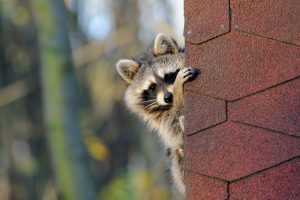 When you hear strange noises in your Dallas home, your first thought might not be raccoons. However, the furry bandits are notoriously dexterous and can manage to maneuver their way into your home when no longer content with your garbage cans. Often the easiest way for raccoons to gain entry into your home is though insecurities in your roof. Here are five ways raccoons may be getting inside your home.
When you hear strange noises in your Dallas home, your first thought might not be raccoons. However, the furry bandits are notoriously dexterous and can manage to maneuver their way into your home when no longer content with your garbage cans. Often the easiest way for raccoons to gain entry into your home is though insecurities in your roof. Here are five ways raccoons may be getting inside your home.
-
Roof-Soffit Intersections
A roof-soffit intersection is any place where two sections of your roof meet. Most often, the shingles of a lower roof meets with the soffit, or the underside of an eave, of an upper roof. They tend to be the most vulnerable areas of your roof and can be easy access points for pests like raccoons or squirrels. Using the lower, shingled part of your roof, raccoons can push against a flimsy aluminum or plastic soffit and gain entry to your attic.
-
Roof Vents
A lot of the time, when raccoons enter your home, they are looking for refuge from the elements. If it’s particularly cold outside, they can feel the warm air circulating from the vent on your roof and they will destroy the cover in an attempt to take shelter from cold weather. Similar to flimsy soffits, aluminum or plastic vents allow raccoons to gain easy access to your house.
-
Chimneys
Chimneys provide ventilation for your home’s fireplace, but they also provide an excellent entry point for raccoons. Chimneys are similar to hollow tree trunks, and raccoons are drawn to them because of their ability to scurry up and down the length of the chimney. Chimney dampers are an excellent place for raccoons to nest, so a mother raccoon may decide to make her home inside of your chimney.
-
Roof Edges
The edge of your roof is extremely vulnerable to deterioration due to its proximity to the rain gutter. Rain and snow weaken this area of your roof and opportunistic raccoons are able to claw and scratch a hole into the roof edge and get into your attic.
-
Plumbing Mats
Plumbing mats are rubber mats that cover the hole in your roof that is created when the plumbing vent is installed. These rubber mats are found surrounding those cylindrical vents sticking out of your roof. Raccoons are able to pull up the rubber mat or tear off sections of the mat and in doing so they will gain access to your attic.
How To Tell If You Have a Raccoon Infestation
You’ll be able to tell if you have an unwanted raccoon in your house or on your property if you notice:
- An ongoing smell of feces or urine
- Damage to the outside of your house, roof shingles, or rain gutters
- Overturned trash can lids
- Paw prints on the side of your house
- Holes in your yard may also indicate the presence of raccoons
Professional Dallas Racoon Removal
The wildlife removal professionals at Critter Control® of Dallas use humane and non-toxic methods of removal when it comes to unwanted raccoons or other wild animals inside your home or workplace. Not only will we safely and efficiently remove any nuisance critters, but our licensed and trained technicians will also seal-up and reinforce your property to make sure they do not return. If you suspect you have raccoons in your home, give us a call for a free estimate at 817-222-1101.




